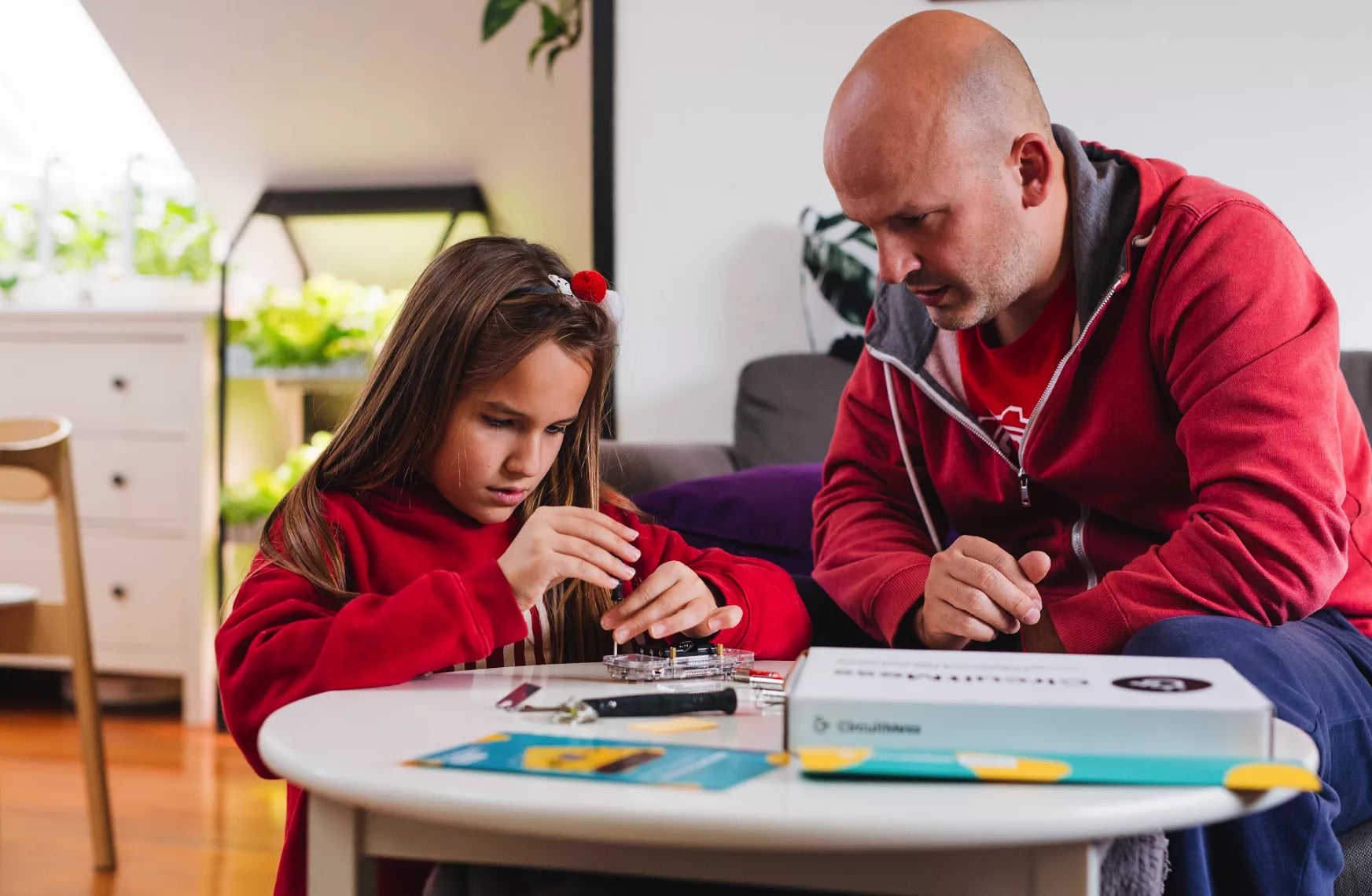
10 Exciting STEM Activities for Kids to Dive Into at Home
Read stories how our founder Albert turned his childhood passion into CircuitMess, and get exciting DIY project ideas you can do with your kids at home for free.
Table of content
If you want to encourage kids to explore STEM, you'll have to move away from formula cheat sheets and onto fun and interactive experiments. With these ten STEM activities for kids, you'll see that learning and having fun actually do go together.
But first, let's see why learning about science matters not only in classroom, but in real life, too.
Why are STEM projects beneficial for kids?
Since the early 2000s, there's been a huge shift in the way we view education. As a parent, you've probably noticed the rising prevalence of science, technology, engineering, and math (STEM) activities across school curricula and your child's classroom.
This shift is a fantastic development!
Why? Because science experiments and STEM learning help kids develop problem-solving skills and critical thinking, the skills that are extremely important later in life.
Here are some other benefits your kid can reap by doing STEM challenges:
- Fostering teamwork skills
- Practicing patience and focus
- Igniting creativity
- Expanding career horizons
- Boosting self-confidence
- Enhancing academic success
Speaking of STEM education, did you know that the United States has rolled out a program called Next Generation Science Standards (NGSS) in many schools? It's a clear signal of just how vital STEM topics are for your child's future.
Clearly, STEM is here to stay, and you probably want your kid to embrace it. But before you order a next-day delivery of an expensive microscope, remember that there are equally effective DIY STEM activities for kids.
What is the easiest way for your kid to explore STEM?
While there's nothing wrong with memorizing perimeter formulas for different shapes, your kid deserves a more engaging learning experience, which you can achieve with fun STEM challenges, activities, and games.
In fact, at-home STEM projects aren't only more fun than the alternative; they're also better for brain development in younger kids.
The LEGO Foundation has looked at dozens of research papers on neuroscience and found that learning through play has a positive effect on children's cognitive, social, and emotional development. The Foundation states that the activities for kids have to be joyful, interactive, engaging, meaningful, and iterative in order to be effective.
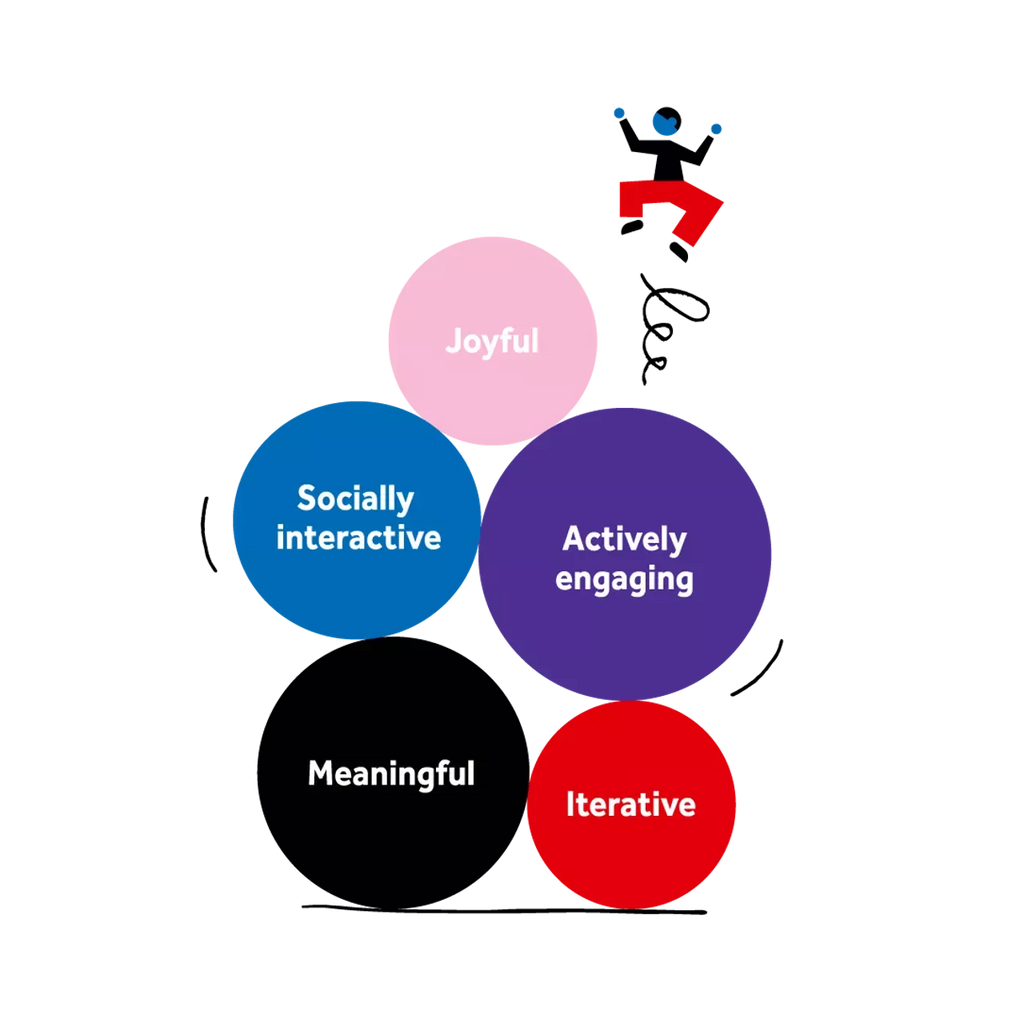
Since it's a bit difficult to incorporate all these characteristics into a single STEM project, it's good to have a variety of STEM challenges at hand.
We know you're eager to start experimenting with your little future engineer as soon as possible. So, take a look at the list of ten fun STEM activities for kids that you can carry out at home.
10 fun STEM activities for kids of all ages
Don't want to leave your home to teach kids essential STEM skills? Well, you don't have to!
These ten awesome activities we'll now see will help your child develop a love for STEM right in your kitchen (although they're also perfect for classroom settings).
You'll be amazed at how a few simple supplies and common materials allow you to explore science, technology, engineering, and math in a fun and accessible way. Gather materials, put your safety goggles on, and let's go!
#1 Build a straw roller coaster
Minimum equipment for maximum fun—this could very well be the title of the first STEM project on our list.
We're talking about building a straw roller coaster, a challenge that combines simplicity and creativity to create an exciting learning experience.
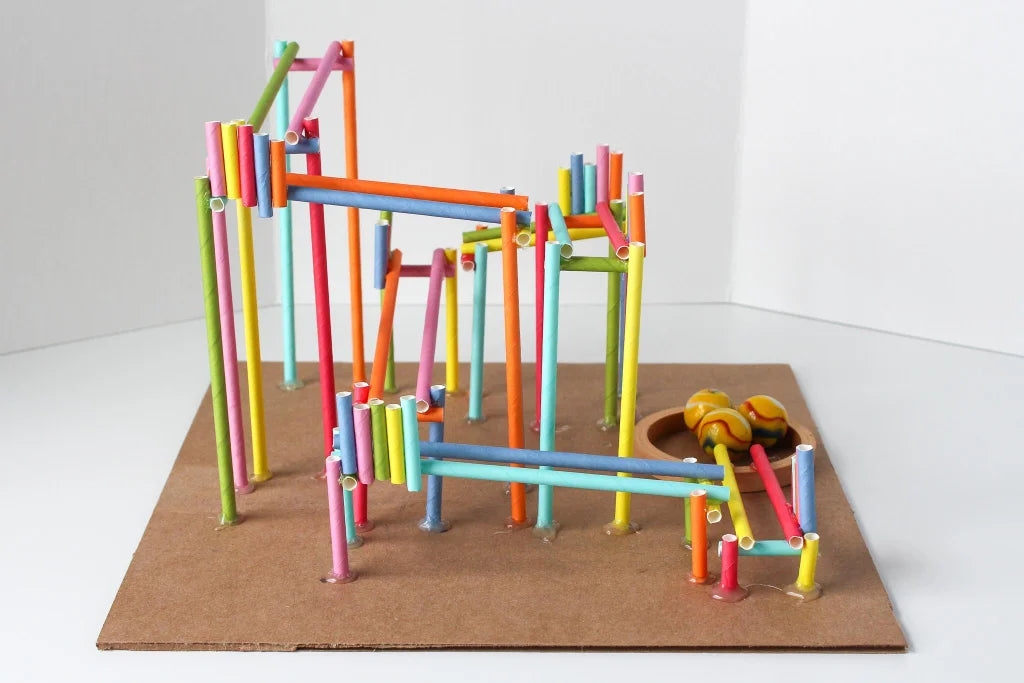
To get this STEM activity started, you'll need a piece of cardboard, straws (plastic or paper), scissors, and glue. These basic supplies let you have fun designing simpler structures.
Some tutorials, like this one, also call for a glue gun and let you take the challenge up a notch.
Whatever version you choose, you can also add on a few marbles and do a marble run.
Watching those marbles navigate the twists and turns is not just entertainment; it's a lesson in gravity, force, and motion. It's a hands-on exploration of scientific concepts that can spark a lifelong interest in STEM.
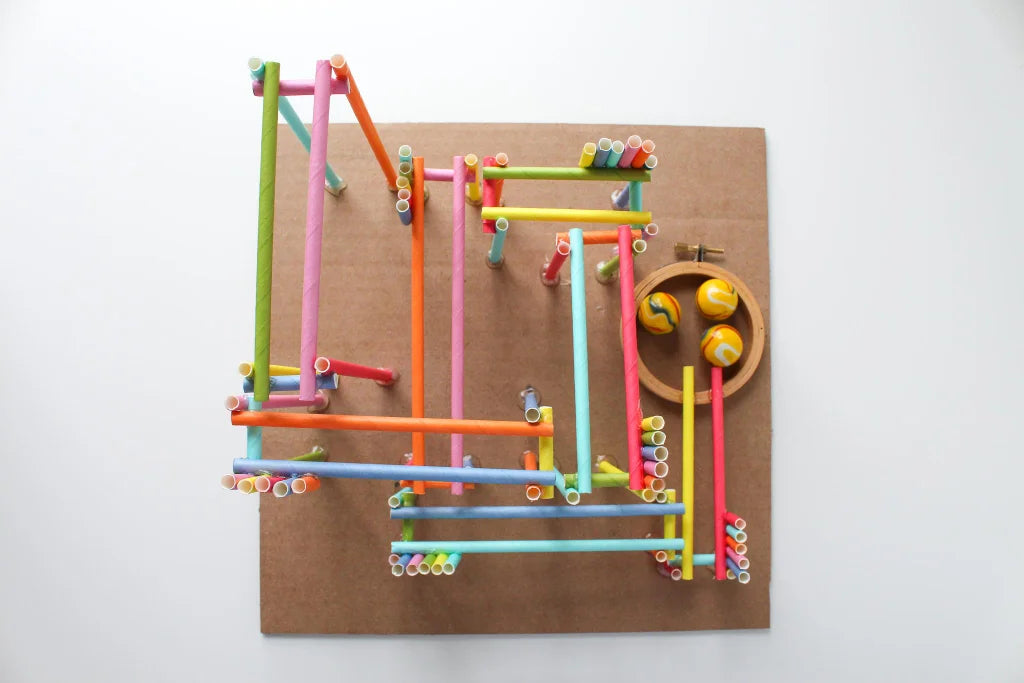
Since this activity is done with straws rather than large cardboard tubes, it encourages dexterity and fine motor skills.
That's what makes it a fantastic way for older kids to put their vision into action, honing their problem-solving skills along the way.
#2 Create a solar oven
Remember the NGSS program that we've mentioned above?
Well, one of its performance expectations involves energy conversion. Precisely, the expectation is phrased like this:
"Apply scientific ideas to design, test, and refine a device that converts energy from one form to another."
What if we told you that you can teach kids about energy conversion in your backyard? The teaching method is as simple as creating a solar oven (also called a solar cooker).

By constructing and using a solar oven, your kid can get a hands-on lesson on the transformation of light energy into heat energy.
This science activity isn't as straightforward as most others are, so it's best to follow one of the many tutorials online. Even NASA has a solar oven tutorial; how cool is that?
Most versions of solar ovens require common household materials, such as aluminum foil, plastic wrap, and black construction paper.
Oh, and you'll also need an empty pizza box. Your little scientist will probably be glad to help you get one. 😉
Bear in mind that making a solar cooker involves a fair amount of cutting, meaning that this fun activity is suitable for kids aged 12 and above.
#3 Build a catapult
If you're looking for educational and fun STEM activities for kids that revolve around engineering, look no further than catapult building.
Constructing this simple machine helps you teach STEM and lets your kids learn about kinetic energy. While playing with a DIY catapult, your kid can learn about the concepts of force and motion.
This STEM activity is also another one you can use to showcase the process of energy conversion because kids get to see how the elastic potential energy stored in the rubber bands is converted into kinetic energy when the catapult is released.
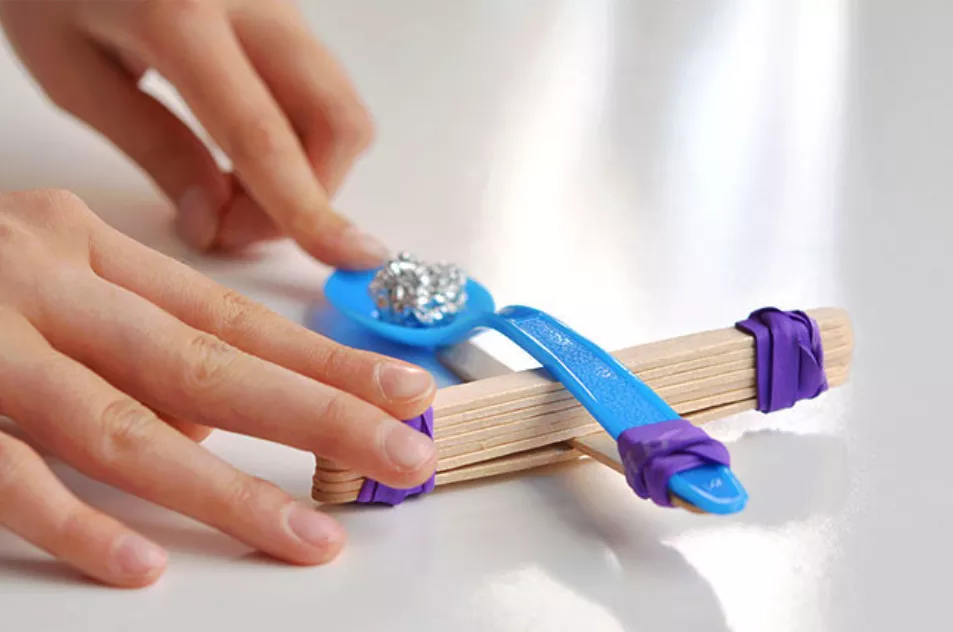
Now that we've mentioned rubber bands, let's go over other materials you'll need. These are craft sticks, a plastic spoon—and that's it!
Of course, don't forget to prepare a variety of projectiles of different weights as they are crucial for learning about trajectory and force. Candy hearts, pebbles, paper balls, and mini marshmallows are just some of the items you can use.
Here's an additional idea: you can turn your catapult project into an exciting science experiment. Encourage your child to predict how far each type of projectile can travel. Then, test their predictions by launching the projectiles and measuring the distance they cover.
What a fun, hands-on lesson in physics and engineering, where hypotheses are tested, and discoveries are made!
Lastly, playing with a catapult is one of those STEM activities for kids of all ages. While younger ones can enjoy flinging projectiles around, older kids can hone their engineering skills and dig into the science behind the project.
#4 Set up a homemade trampoline
Hold your horses! Before you start picturing a full-sized backyard trampoline and the crazy flips that come with it, let's clarify something.
Building a real trampoline is a dangerous endeavor. Luckily, there's a a mini version that brings the same STEM principles into play, without the potential hazards.
Imagine a mini trampoline, just big enough to bounce balls or other objects. It's a fantastic way for kids to explore physics, elasticity, and energy transfer in a controlled and safe environment.
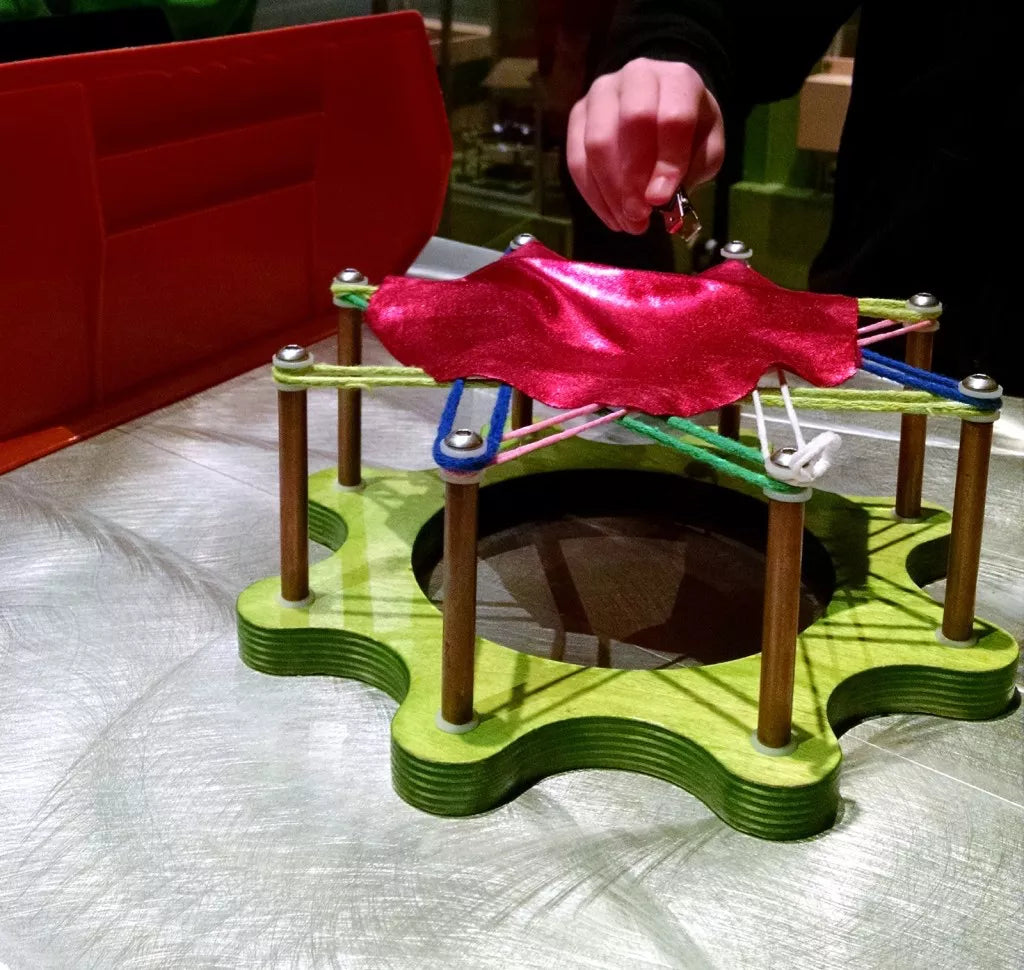
The idea of this challenge is to build a frame and use it to support a rubber-band net which is covered with a stretchy fabric.
If you don't have elegant-looking materials for the frame on hand; don't worry. You can achieve the same results by using a bowl or a colander.
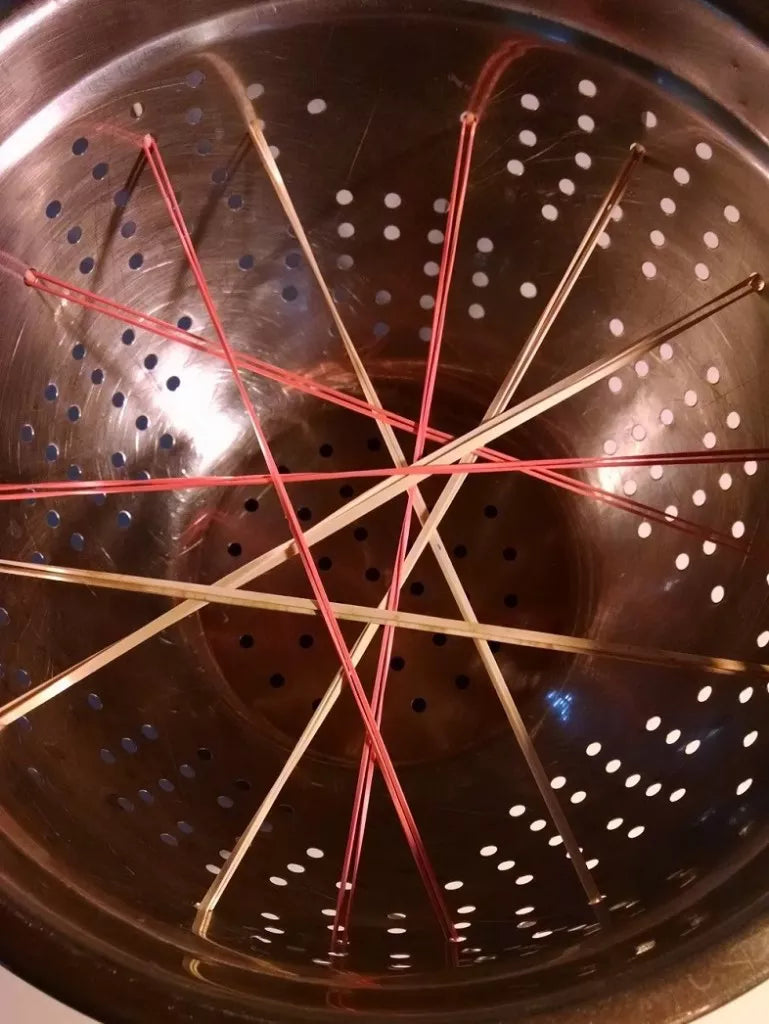
After the assembly, kids can start experimenting with different types and sizes of balls.
How high will a bouncy ball bounce compared to a tennis ball? What happens when you drop a heavier ball versus a lighter one?
Although this is a fun kid-friendly activity for children of all ages, we find it the most useful for kids in primary school because it aligns with their physics curriculum.
#5 Build a remote-controlled robot car
Anyone can buy a remote-controlled (RC) car and drive it around. But, how many kids can say that they've built the car they're controlling?
With quality RC car kits, such as this one, your child can dive into the world of STEM while assembling and customizing their very own RC robot car. This project combines engineering, electronics, and programming to provide an immersive and educational experience.
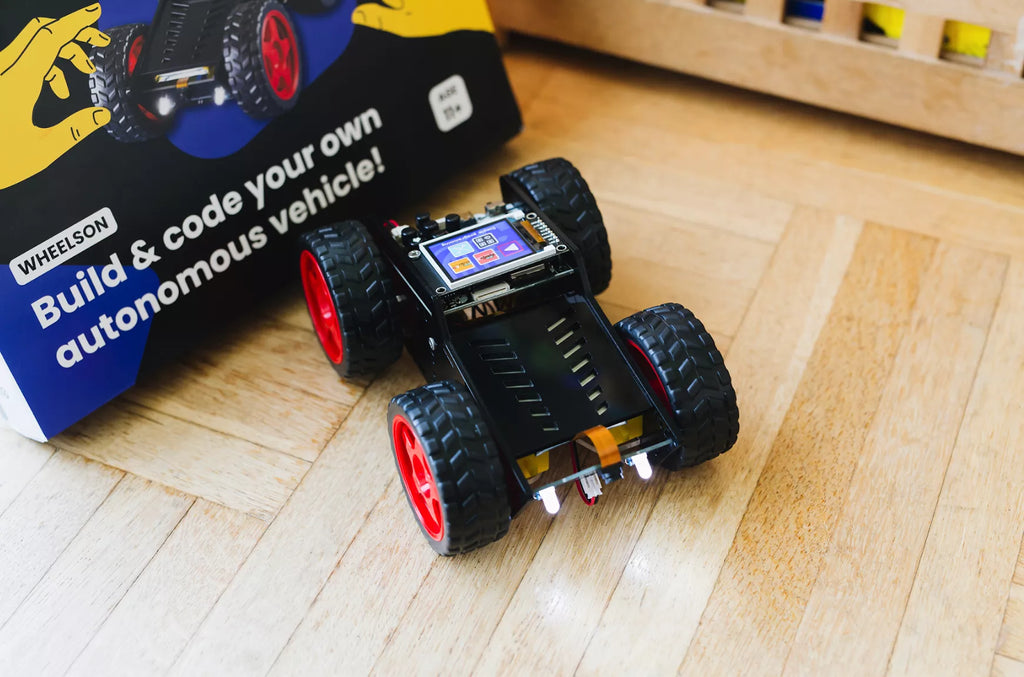
Building the CircuitMess RC car involves not only connecting components, but also programming the car to control its functionalities and performance.
You can do this either by writing code from scratch or by rearranging code blocks—there are options for all skill levels.
Also, depending on the level of experience with electronics, this project is suitable for kids ages 11 and up. However, younger children will also enjoy playing with the car after an older sibling builds it.
#6 Build and code your own DIY game console
Watch out, there's another tech-oriented STEM kit coming your way!
If your child enjoys playing video games, you should take advantage of their interests and challenge them to create their own game console.
The easiest way to build a game console is with a kit that includes all the necessary components, tools, and instructions.
For instance, Nibble is one such kit that was designed to be beginner-friendly, intended for ages 9 and up. It lets your kid learn about both hardware and software engineering in an engaging and fun way.

After your child has soldered their way to the assembled game console, the real challenge begins. They can choose between playing the pre-loaded mini games, or coding their own video games.
Creating original video games is an excellent way for kids to learn programming languages such as C++, which is an essential skill for future careers in technology.
Either way, they'll solve problems, develop critical thinking, and gain hands-on experience in the field of game development. Much better than simply playing video games for hours, right?
#7 Design a straw globe
STEM stands for science, technology, engineering, and math. Yet, math frequently gets a bad rap as the least exciting of the four disciplines. But what if math could be transformed into an enjoyable activity?
With the straw globe project, it definitely can be!
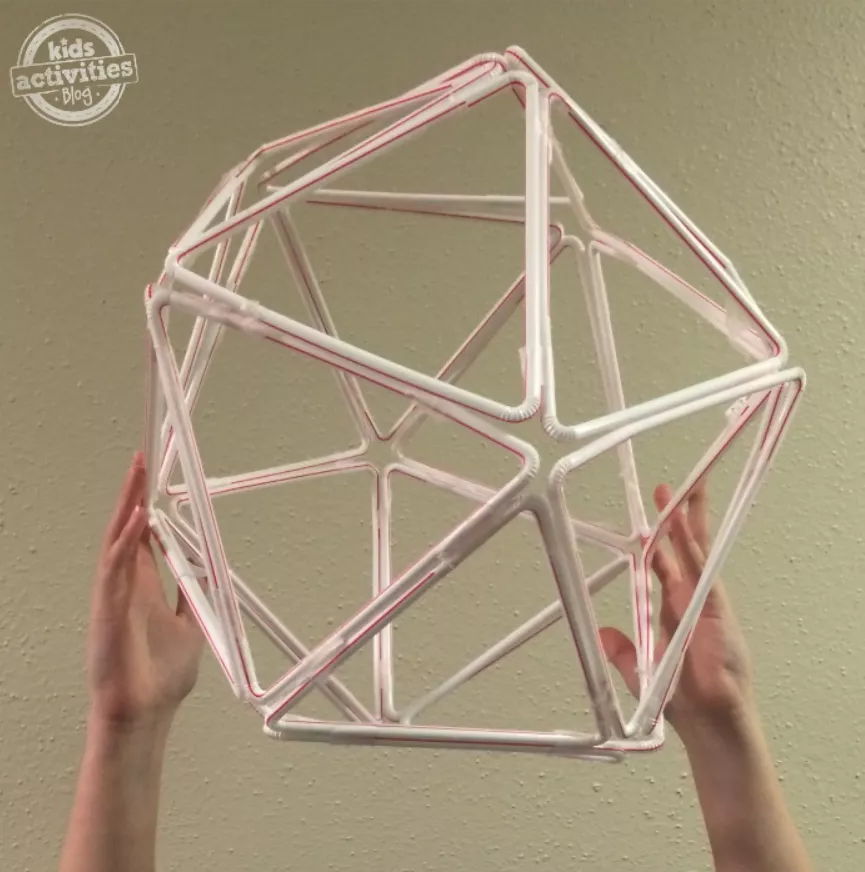
This inexpensive project involves using straws, tape or pipe cleaners, and scissors to make a globe model. Your child's version probably won't be too Earth-like, but who's to say that there isn't an icosahedron-shaped planet out there in one of the many galaxies?
Now, you don't have to toss around the words like icosahedron to teach your kid math. The straw globe project is an accessible way to explore math concepts such as geometry, measurement, symmetry, and patterns.
So, the next time your child grumbles about math homework, suggest building a straw structure. The design process will be a fantastic way to showcase the real-world applications of mathematical principles.
#8 Create a biosphere
While they are educational and fun, some science experiments are one-time-only endeavors. However, with the creation of a biosphere, your child can start a long-term scientific journey that can last for months.
Simply put, a biosphere is a self-contained ecosystem encapsulated in a glass container or a jar. It's like having a tiny living world of your own.
The first biosphere-related project your child can make is to build a mason jar terrarium. With no animals involved, this STEM activity is suitable for budding biologists as young as six years old.
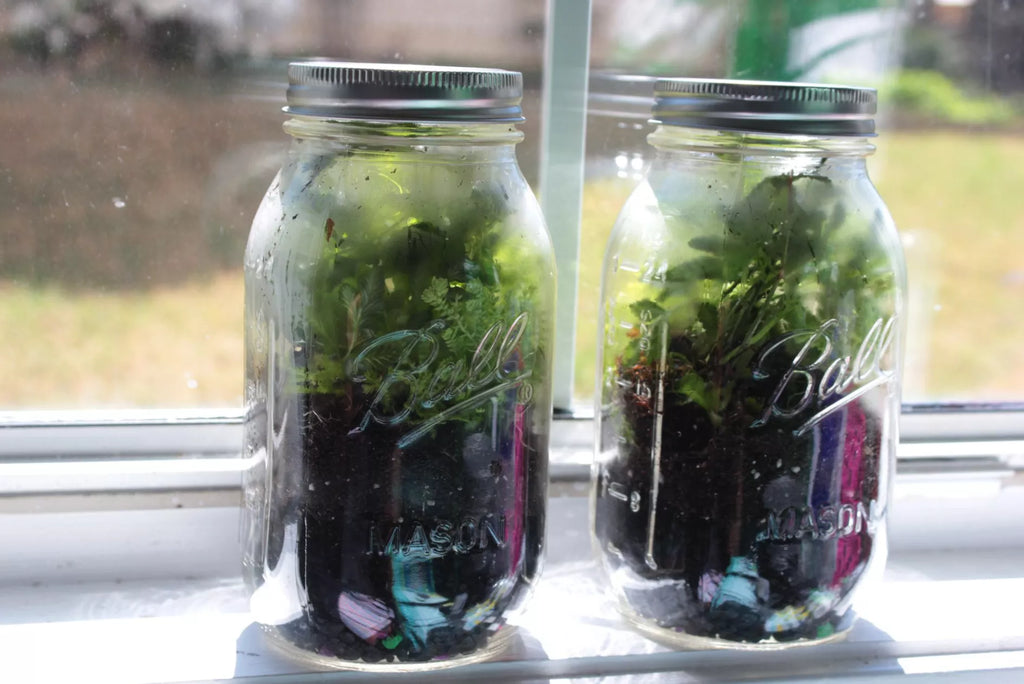
Decorating the jar is only the beginning of the fun.
To truly reap the educational benefits of this activity, your child can explore how the plants interact with each other, and observe the water cycle in action.
Additionally, maintaining a biosphere teaches responsibility as your child becomes the custodian of this miniature ecosystem. They'll need to monitor and care for the plants, ensuring that they thrive within their closed environment.
#9 The egg-drop challenge
Technology, engineering, creativity, and a raw egg—an unlikely combination of words to see in the same sentence. Yet, they go perfectly well together in the thrilling egg-drop challenge.
The challenge is simple: your kid needs to invent a device that protects an egg from breaking when dropped from a height.
A DIY parachute, a peanut butter jar, crumpled paper, or a straw case are just some of the methods that your little engineer can use to tackle this challenge.
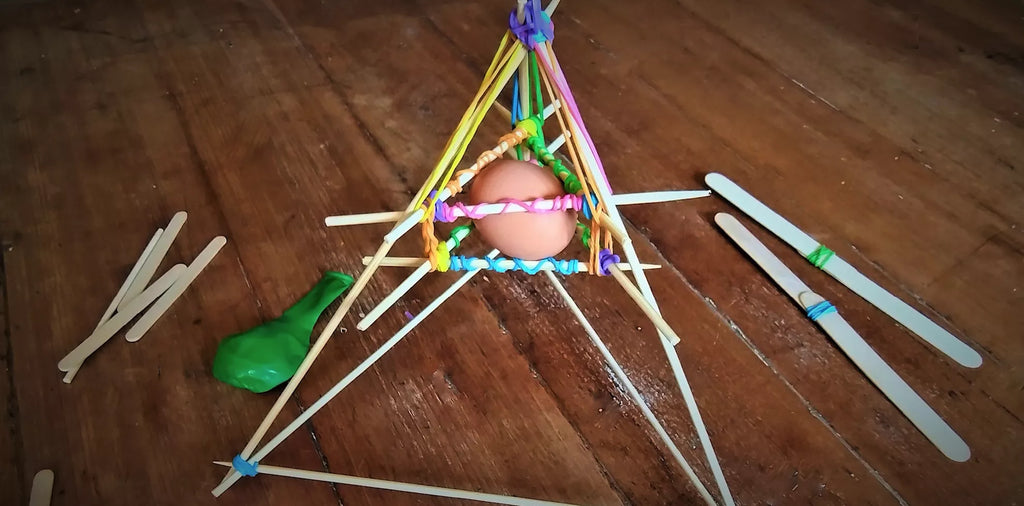
As engineering requires meticulous planning, your kid should first think their contraption out and design their solution. You can find a free printable sheet here and let your child use it to map out their idea.
Then, it's time to start experimenting.
Be prepared; there will be some cracked eggs. To keep the number of casualties at a minimum, we recommend that you do this activity with older children.
However, if you don't mind some extra cleaning, you can also include primary schoolers and help them start learning about physics, gravity, and motion.
#10 Engineer a popsicle bridge
Here's a challenge for you: take a popsicle stick and bend it. It will most certainly snap.
But did you know that with the right engineering skills, those flimsy craft sticks can be transformed into sturdy bridges capable of supporting weight?
If you want to introduce your kid to structural engineering and the science behind it, then building a popsicle bridge is the right activity for you.
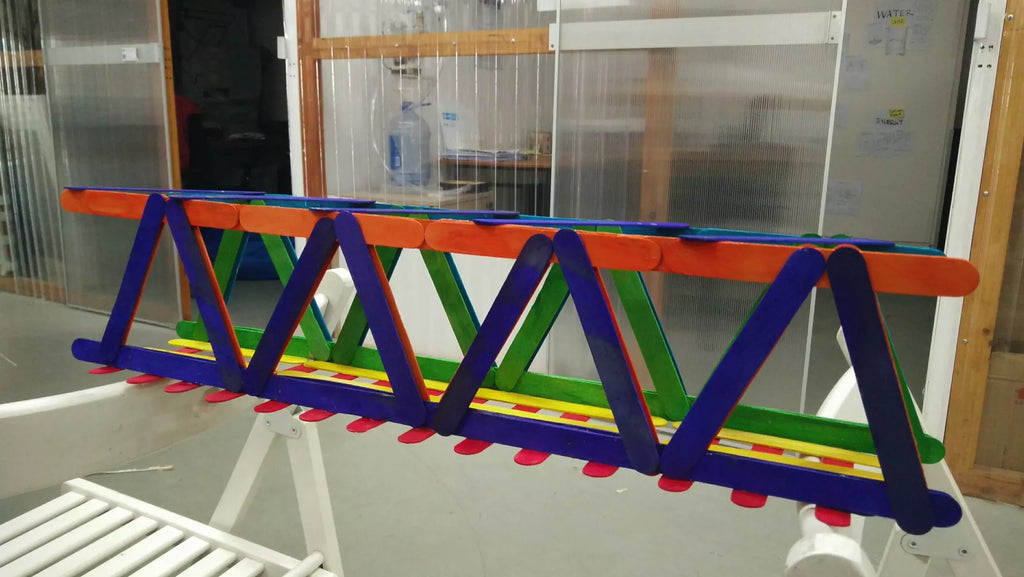
By gluing sticks together in different configurations, your child can discover how the choice of bridge design affects the bridge's strength and stability.
And don't forget that in real-world architecture, appearance goes hand in hand with functionality.
For bonus points, you can encourage your kid to paint and embellish the craft sticks, transforming this engineering challenge into a fantastic example of STEAM activities (A stands for art!) that promote both creativity and problem-solving skills.
Which STEM kits can help get your kid into STEM?
As we've seen, recycled materials or household objects are a nice intro to STEM. However, if you're looking for more complex projects that will truly intrigue your little one, it's probably better to get a STEM kit designed by professionals.
If you're looking for a kids subscription box, on the other hand, you may want to check our list of top picks! Or simply - select one of our own DIY STEM kits!
CircuitMess, and other reputable educational kit providers, offer kids a more structured way to learn about different aspects of science and technology.
With CircuitMess kits, your child can build simple machines, experiment with electronics, and even code their own games. So, whether your kid is interested in robotics or playing video games, there's likely a STEM kit out there that matches their interests and educational needs.
Read stories how our founder Albert turned his childhood passion into CircuitMess, and get exciting DIY project ideas you can do with your kids at home for free.
Read more

What is STEM? A Fun and Future-Focused Way to Learn
Curious about STEM? Explore how it brings Science, Technology, Enginee...

Is Your Child Ready to Become a Space Explorer? (Here's How)
Your portal to space exploration. Build robots, code games, and unlock...

DIY Delights: 5 Easy Electronics Projects for Kids
Join thousands of parents inspiring their kids with these 5 easy elect...
